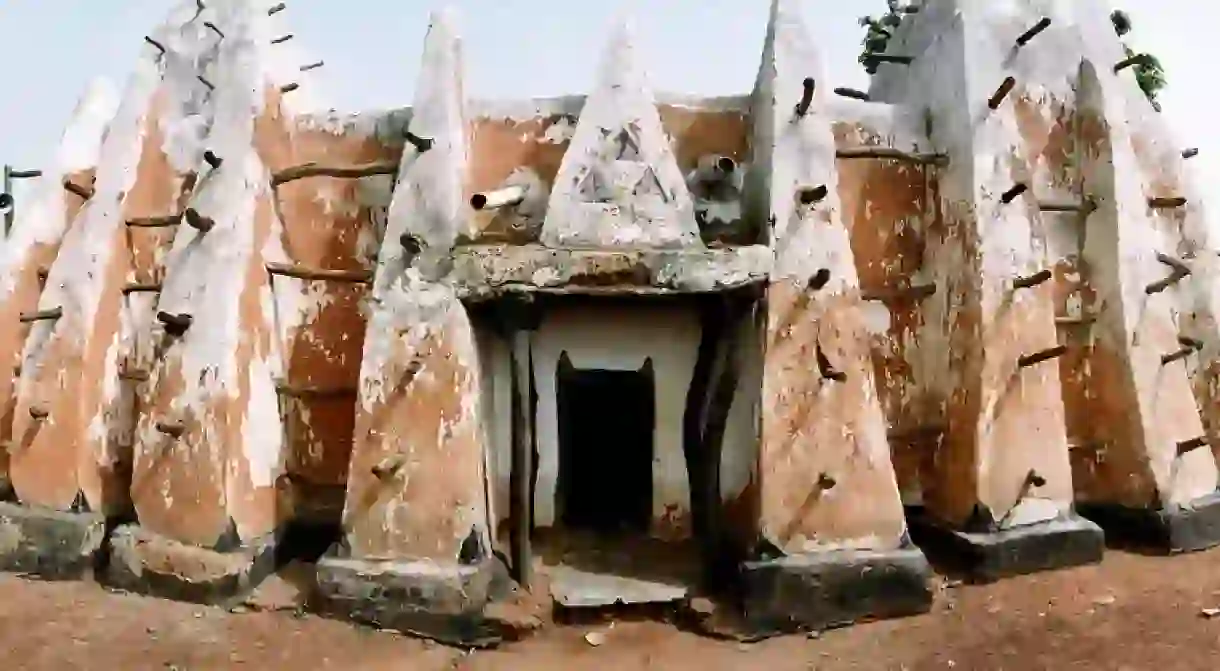The Beauty of Ghanaian Architecture In Four Buildings

Architecture is one of the first things to notice and the last to forget when visiting a city or country, and Ghana is no exception. The dynamic use of space, which incorporates designs, motifs, colour and other symbolic accents, lends characteristics to the landscape. Ghana has a unique blend of ancient and modern architecture, influenced by its illustrious history and the ideas of brilliant minds who memorialised various epochs in the walls of some of the buildings.
Traditional Ghanaian architecture was driven by the raw material available for buildings, such as thatch for roofing and mud and wood for walls. Today, such buildings are rare, although modern architects try to borrow some of their elements when designing and constructing buildings. In addition, British colonialism also left behind many landmarks, including Victorian-style towers, slave castle and forts. Here are some of the buildings in Ghana that are admired not just for their beauty, but also for the position they have etched in history.
The Larabanga Mosque
The Larabanga Mosque in the Northern region is the oldest mosque in Ghana, and one of the oldest in West Africa, thought to date back to 1421. This black-and-white Sahelian structure has a distinct mud minaret with wooden poles jutting out, similar to other mosques in West Africa such as those found in Timbuktu, as well as other buildings with ancient Sudanese architecture. The Larabanga Mosque shows the relationship between present-day Ghana and the Western Saharan empires such as Ghana, Mali and Songhai, which had a strong influence on the sub-region. It represents the fortitude of these architectural styles, which have survived for centuries and continue to be a popular destination for tourists.

Cape Coast Castle
The Gold Coast, a former British colony, was a major hub for the enterprise of slavery in the past. The Ghanaian coastline, stretching around 560km (348 mi.), has the highest concentration of slave forts and castles anywhere in the world. Therefore, it’s no surprise to see buildings like the Cape Coast Castle here. Built in the 15th century by the Portuguese, it was a major point of departure for millions of slaves to the New World. Its design is akin to other buildings such as the Christiansborg Castle in Accra or the Elmina Castle, with its similar walls, narrow hallways, dungeons and network of tunnels. All of these slave forts and castles are major tourist sites today, and are talking points for the true nature of slavery.

The National Theatre
Built by the Chinese in 1992 as a gift to the people of Ghana, the National Theatre is an example of a building whose style doesn’t look incongruous with the surrounding areas. Yet today, with all of the other modern minimalist-inspired buildings around it in the centre of Accra, its dome-like roof (resembling the Sydney Opera House) stands out from the crowd. The National Theatre hosts many plays and concerts throughout the year and is home to Ghana’s National Symphony Orchestra.
The National Theatre, South Liberia Road Accra, Accra, Ghana, +233 302 663 449

Villaggio Vista
The three Villaggio towers – the tallest residential buildings in Ghana, which ascend into the horizon – have completely redefined the Accra skyline, representing the new direction the city’s architecture has taken. Many other buildings in upscale suburbs like Cantonments and North Ridge attempt to replicate the iconic look with their bright bold colours, but don’t evoke the same level of pleasure in the beholder. These apartments are reserved for the affluent in Ghana who can afford the pricey rents and keep up appearances. Nevertheless, Villaggio is a visual joy and a unique addition to the Accra skyline.
Villaggio Vista, N, 16 N Airport Rd, Accra, Ghana, +233 302 785 756

These four buildings represent a small fraction of the extreme architectural beauty that the country has to offer. In all the other towns and cities in Ghana, many other buildings exist that will wow you with their splendour.













